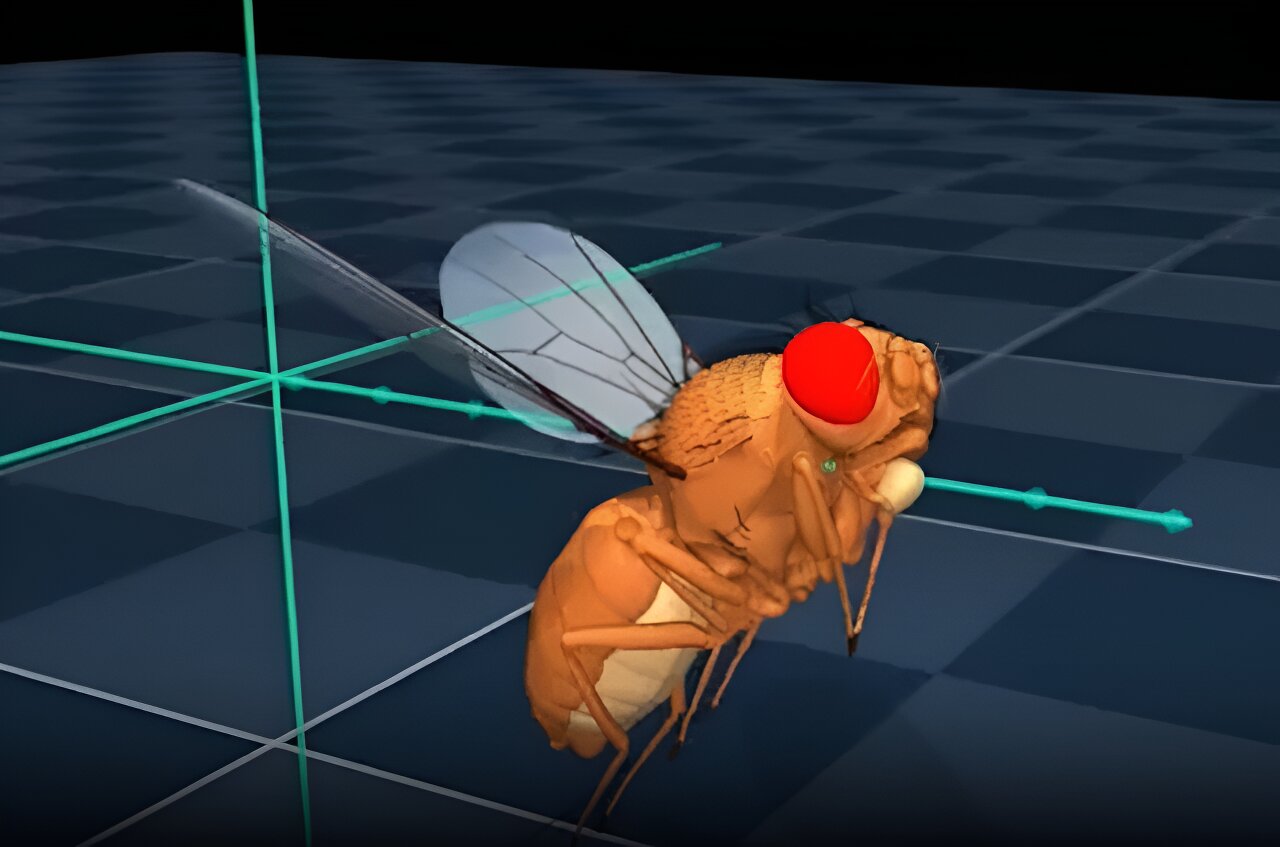Artificial Intelligence Brings Digital Fruit Fly to Life
In a groundbreaking collaboration, researchers from Janelia and Google DeepMind have used artificial intelligence to create a virtual model of a fruit fly capable of mimicking real-life behaviors. This innovative digital insect can both walk and fly, offering the most lifelike simulation of a fruit fly to date. By integrating AI into a detailed anatomical model of the fly’s exoskeleton, paired with a physics engine and trained neural networks, this virtual fly moves as if it were a living organism.
The virtual fly doesn’t just move; it responds to its surroundings through simulated sensory inputs, including visual stimuli that help guide its flight. Roman Vaxenburg, a machine learning expert at Janelia, shared that the AI was trained on data from real flies to replicate their walking and flying patterns. This model not only represents a major step in AI applications but also lays the groundwork for future, more advanced simulations of various species.
The Science Behind the Virtual Fly
This digital insect was created by combining detailed imaging, AI training, and a fast physics simulator, enabling scientists to model how the fruit fly’s nervous system, body, and environment interact. Unlike previous models, this version is incredibly precise, simulating 67 interconnected body parts and 102 degrees of freedom, which mirror the complexities of a real fly’s movements. Such advancements open doors to deeper insights into the relationship between anatomy, physics, and behavior.
Senior scientist Srinivas Turaga explained that this simulation allows researchers to better understand how the nervous system’s commands translate into physical actions. By analyzing how the virtual fly moves in different environments, scientists can further explore how external factors like aerodynamic forces influence behavior. This type of simulation could revolutionize the way researchers study biology, as it provides a controlled, digital platform for experiments that would otherwise be difficult to conduct in a lab.
Future Prospects and Broader Applications
The virtual fruit fly is just the first of many potential AI-driven models. The research team plans to improve the model by adding more detailed anatomical features such as muscles, tendons, and a more accurate neural network, which will allow the fly to react even more like its real counterpart. These advancements will also pave the way for creating virtual models of other species like mice and zebrafish, which are frequently studied in neuroscience.
This open-source simulation framework allows researchers globally to develop their models, making it a valuable tool for the scientific community. As AI continues to evolve, its ability to simulate and analyze biological organisms in such realistic detail will likely play a significant role in advancing neuroscience, biomechanics, and other fields of study.
